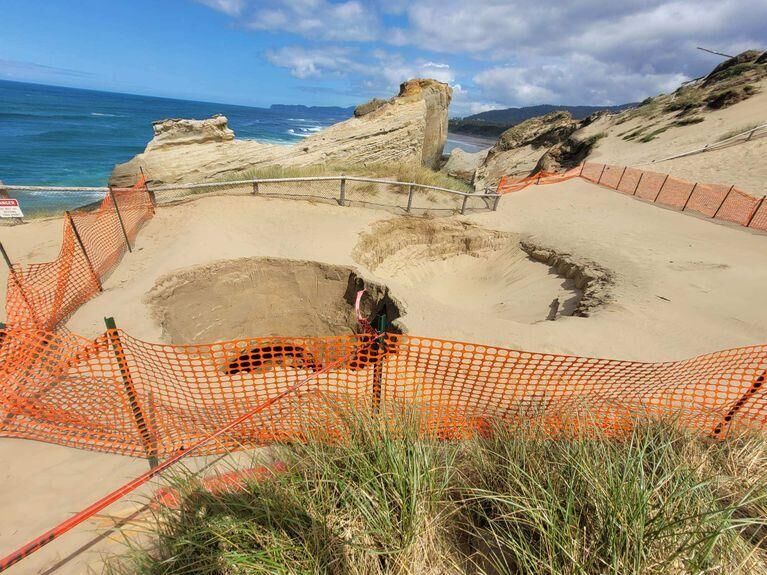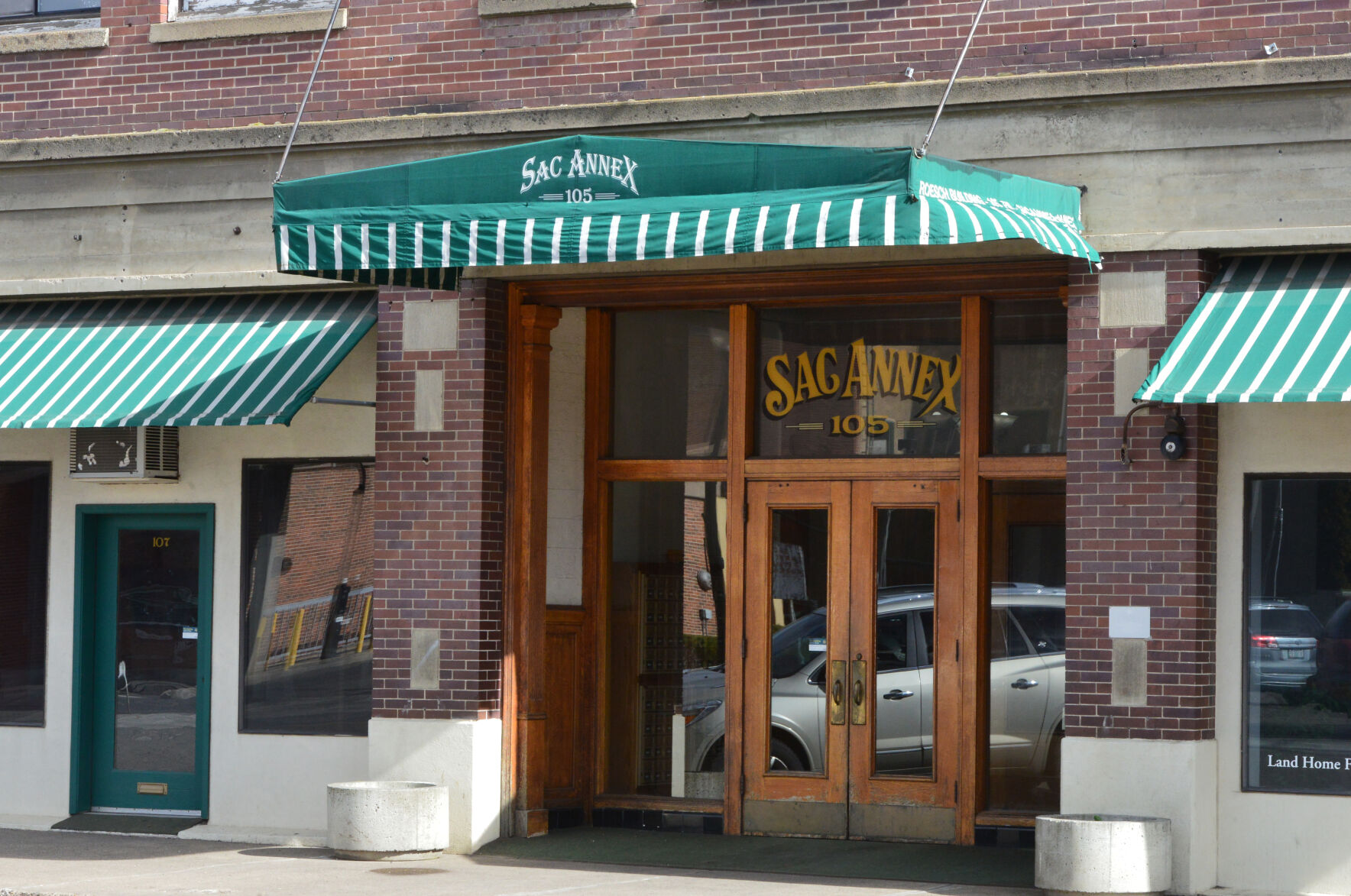Cape Kiwanda sinkholes continue to shift, park officials warn Oregon coast visitors
Published 7:48 am Wednesday, May 24, 2023

- Two sinkholes have appeared at Cape Kiwanda, near Pacific City, this year.
As the first big holiday weekend of the season arrives, Oregon State Parks is reminding visitors to Cape Kiwanda to stay alert to possible changing conditions as two sinkholes continue to move.
“We just want to encourage people to recreate at Cape Kiwanda safely and respect barriers in place,” said Jason Elkins, Cape Lookout State Park manager. “Be aware of your surroundings at all times because the sinkholes could change at any moment and others could appear.”
The first sinkhole appeared last January and is about 15 to 20 feet deep and 25 feet wide. A second sinkhole was discovered May 8 within the safety fence around the original sinkhole. It measures about 10 feet wide and 30 feet deep and is moving to connect to the first.
“Something in the top of the sea cave has changed and that has allowed sand from above to flow through,” Elkins said. “It’s kind of like an hourglass.” The sinkholes are monitored daily, and the barrier fence is being adjusted to address the movement.
Tom Horning, principal and chief geologist at Horning Geosciences in Seaside, believes winter storm surges may have played a role in the changes on the cape.
“Cape Kiwanda is sandstone and it has faults cutting through it,” Horning said. “The waves break open the faults and make sea caves. I think what happened is that the sea caves under there collapsed and created a rock barrier. Dune sand was able to wash in and not wash away, plugging everything up. Then, the surf broke through the rock barrier and washed the sand away, and the sinkhole developed.”
Oregon State Parks hasn’t been able to get into the cave to verify what is happening on the ceiling of it, but aerial photography over the last 100 years shows change to the eastern end of the sea cave, Elkins said. “It seems to be progressing. Our agency has flown drones to get imagery to better understand the situation.”
As the now moist sand dries in the coming warmer months, it will slough out and partly refill the hole, Horning said. But more will likely disappear down the sinkhole and wash out to sea. And, while over the years the sinkholes could fill in with shifting sand, Horning doesn’t think that’s likely this time. “I don’t think this is going to go away unless there’s another course of the sandstone in the sea cave to create a wall. I think this is a permanent feature. At the very least, the sinkholes will be a depression in Cape Kiwanda.”
And they will remain extremely dangerous, Horning said. “The sand walls are steep and can collapse, burying you in an instant. Or, once you’ve gone down, you might not be able to escape because it is too steep to climb out. If the surf rises, you’d be dealing with heavy waves slamming you that can fill the entire sea cave. There is little chance of surviving something like that.”
Since the discovery of the sinkholes, Oregon State Parks has increased its presence on the Cape. “I will give my staff credit, Elkins said. “They’ve handled the situation well while taking care of standard operations. That’s much appreciated. To visitors, I say, don’t let your curiosity get the best of you and put you in an unsafe situation.”





